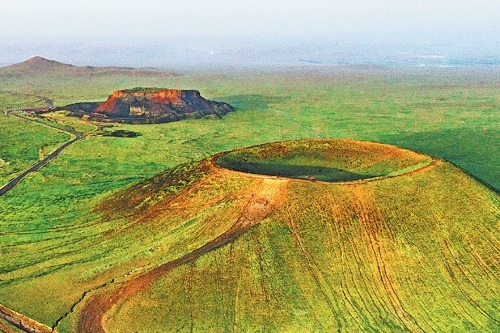Surge in extreme weather requires quicker response

Li Bingji, a farmer in Hebei province, endured a challenging summer as scorching temperatures and prolonged drought parched his farmland.
With precipitation below 10 millimeters and temperatures 2 C to 5 C higher than usual in mid-June, soil moisture evaporated rapidly, exacerbating the drought.
Despite the need for irrigation, Li and his fellow villagers were disappointed when a drizzle on the Summer Solstice barely moistened the top layer of soil.
"It only moistened the land less than half a finger deep," Li said.
That scenario played out across northern China in June, where prolonged heat waves and drought delayed planting schedules, increased production costs and complicated field operations.
In July, several regions experienced over 20 consecutive days of high temperatures, with 59 national weather stations recording daily maximum temperatures that equaled or exceeded historical highs.
"As climate warming intensifies, China is experiencing scorching weather that starts earlier, lasts longer, and has greater intensity and broader impacts," said Chao Qingchen, director of the National Climate Center.
Official statistics show that high-temperature weather is occurring more frequently in China. Between 1981 and 1990, such weather typically began on June 24, whereas last year it started on May 28.
The number of days with regional high temperatures has surged by 4.8 days per decade, with the affected area also expanding significantly.
As temperatures rise, the atmosphere holds more moisture, increasing the risk of extreme precipitation events.
This trend has become particularly evident in northern China, where heavy rainfall was once rare. For the past two summers, the Beijing-Tianjin-Hebei region has experienced unprecedented torrential rains.
"Global warming leads to more frequent extreme events, creating a vicious cycle," said Zhang Dongqi, a researcher with the Chinese Academy of Meteorological Sciences.
"Heat waves reach polar regions, accelerating the melting of glaciers and sea ice, which intensifies global warming."
The increase in extreme precipitation presents significant challenges for urban areas, where dense populations and infrastructure are vulnerable to the impacts of heat island and rain island effects.
Jiang Tong, executive dean of the Research Institute of Climatic and Environmental Governance at Nanjing University of Information Science and Technology, emphasized the need for cities to upgrade their drainage systems to handle vast amounts of rainwater and prevent urban flooding and disruptions to traffic and daily life.
Prolonged heat waves also strain critical infrastructure, including power grids and water supply systems, which are essential to urban life. High temperatures have already led to a surge in heat stroke patients in southeastern China, and experts warn that extreme heat can affect mental health, causing mood swings, memory impairment and feelings of depression and anger.
To address these challenges, China is enhancing its disaster response capabilities by mobilizing grassroots communities and leveraging new technologies.
On June 16, when torrential rain hit Pingyuan county in Guangdong province, local authorities quickly evacuated residents using messaging apps, phone calls and door-to-door visits.
"No matter how prompt our emergency rescue force is, it always takes time to arrive at the disaster site," said Liu Chuanzheng, an official with the Ministry of Emergency Management.
"Therefore, improving grassroots disaster prevention and control capabilities must become a priority."
Xinhua
Today's Top News
- SCO summit poised for fruitful outcomes
- Steps to spur consumption, enhance vitality
- Flag patterns for four branches of PLA unveiled
- China seeks to deepen dialogue, consultations with US
- Pacific Ocean should not be turned into a sea of zero-sum disturbances: China Daily editorial
- Xi signs order to commend military units, individuals






























